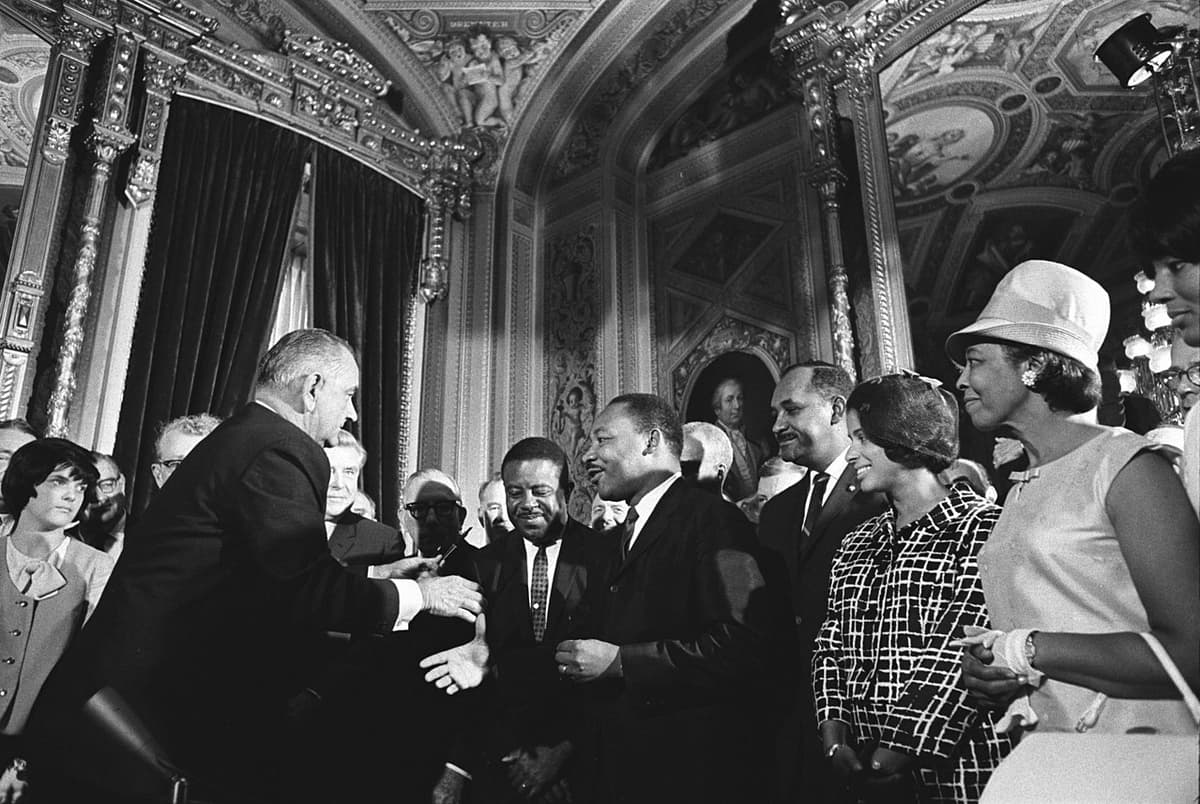The Voting Rights Act and the Facts
Congress specifically forebore establishing a right for members of a protected class to be elected in numbers ‘equal to their proportion in the population.’

The liberal press seems to be under the misapprehension that the Supreme Court endorsing colorblind election maps would amount to the evisceration of a key civil rights law. The Nine, hearing arguments today in a Louisiana redistricting case, “appeared ready to gut a key tool of the Voting Rights Act,” is how the AP gripes. “It sure looks like the Voting Rights Act is doomed,” warns Vox. These alarmist accounts miss the intent of the law, though.
Much of the argument today at the high court centered on Section 2 of the landmark law, passed in 1965 as a means to enforce the provisions of the 14th and 15th Amendments. The law was needed because decades of Jim Crow had left black voters in the South unable to exercise their right to vote. It was a smashing success, as Chief Justice Roberts has pointed out. By 2013, he noted, black voter turnout exceeded that of whites in six Southern states.
Yet in recent decades liberals have tried to apply the Voting Rights Act not merely to vouchsafe blacks’ ability to vote — a benchmark that has already been met. Instead, activists attempt to use the law to impose a kind of affirmative action on the election process, by trying to make sure that states’ congressional delegations correspond to the racial composition of the states’ population. This is an abrogation of the colorblind spirit of the law — and its text.
The text of the 1965 law prohibits any “voting qualification or prerequisite to voting,” along with any “standard, practice, or procedure” that would “deny or abridge the right of any citizen” to vote. Legislation in 1982 to amend the text of Section 2 made it explicit that “nothing in this section establishes a right to have members of a protected class elected in numbers equal to their proportion in the population.”
Yet that hasn’t stopped liberal activists from attempting to achieve that goal. That is the point in contention in Louisiana v. Callais, the case heard by the Nine today. In 2022 Louisiana, where blacks comprise a third of the population, drew a voting map with one majority-black district. Federal courts, pointing to the Voting Rights Act, ordered the state to create two such districts. Yet a group of voters called that, in effect, a racial gerrymander.
While the high court, in Rucho v. Common Cause, has held that a partisan gerrymander is beyond the jurisdiction of federal judges, the prospect of drawing convoluted districts based on race raises constitutional concerns. That’s in part because of the 14th Amendment’s guarantee of “equal protection,” which bars discrimination based on race, as the court made clear in its jurisprudence barring race-based preferences in college admissions.
De facto racial preferences in voting districts, then, would seem likely to meet the same scrutiny at the high court. Yet the press today is griping that “a ruling narrowing section two would strip minority voters of a tool to challenge discrimination,” as the Guardian put it, raising fears of measures “that dilute the influence of minority voters.” That appears to be a misinterpretation not only of the law, but of the Constitution itself.

